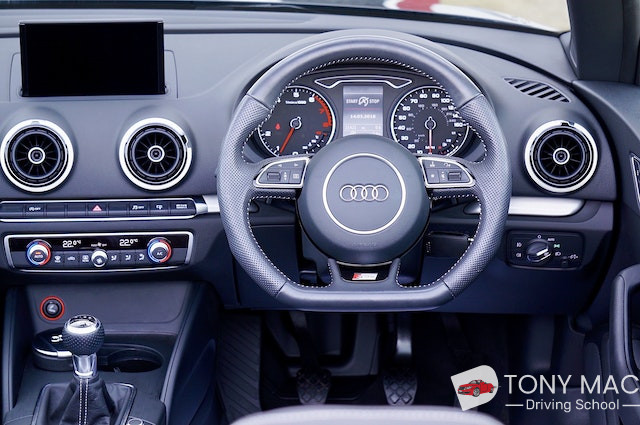Getting Tired Of Learn To Drive? 10 Sources Of Inspiration That'll Bring Back Your Love
Learn to Drive: A Comprehensive Guide for Novice Drivers
Driving is an essential skill that opens a world of opportunities, from job potential customers to freedom and independence. However, discovering to drive can seem read page for lots of novice chauffeurs. This guide will offer essential details about the knowing procedure, ideas for success, and vital knowledge required to become a responsible driver.
The Importance of Learning to Drive
Understanding how to drive is not almost running an automobile; it encompasses safety, obligation, and awareness of traffic laws. Here are a number of reasons discovering to drive is essential:
- Independence: Driving permits people to take a trip freely and manage their schedule without dependence on public transportation.
- Employment Opportunities: Many tasks require a legitimate driver's license, particularly positions involving travel or travelling.
- Access to Emergency Services: In times of requirement, having the ability to drive can provide quick access to healthcare and other important services.
- Convenience: Shopping, running errands, and taking a trip ended up being significantly easier with the autonomy that driving offers.
Key Steps in the Driving Learning Process
Learning to drive normally involves several vital actions that every beginner driver need to follow:
1. Understand the Requirements
Before supporting the wheel, it's essential to be familiar with the requirements for acquiring a driver's license, which can differ by state or nation. These usually consist of:
- Minimum age requirements
- Needed documents (e.g., evidence of identity, residency)
- Parental approval if underage
2. Register in a Driver's Education Program
Taking an official driver's education class is beneficial for amateur chauffeurs. Such programs typically include both vehicle operation training and knowledge of traffic laws.
- Class Instruction: Covers traffic signs, guidelines of the road, driving laws, and safe driving practices.
- Behind-the-Wheel Training: Provides hands-on experience under the guidance of a qualified instructor.
3. Obtain a Learner's Permit
A learner's permit allows newbie motorists to practice under certain conditions. To obtain one, individuals must:
- Pass a composed test on traffic laws and precaution
- Pay suitable charges
4. Practice, Practice, Practice
The most crucial action in finding out to drive is practice. Here, the focus must be on:
- Supervised Driving: Driving with a licensed adult can help build confidence.
- Varied Conditions: Practicing in different environments (night driving, rain, highway driving) improves skills.
5. Get ready for the Driving Test
As soon as enough practice has actually been completed, the next action is getting ready for the driving test. This generally includes:
- Reviewing the guidelines of operation for the driving test
- Practicing specific maneuvers such as parking, turning, and lane changes
6. Take the Driving Test
The final difficulty will be the driving test itself. Effective completion enables people to get their complete driver's license.
7. Knowledge of Vehicle Operations
Understanding how to operate a vehicle extends beyond simply driving. Key vehicle operations for drivers consist of:
- Familiarizing oneself with dashboard controls (speedometer, fuel gauge, warning lights)
- Knowing how to carry out fundamental automobile maintenance checks (oil levels, tire pressure, brakes)
Safety Tips for New Drivers
Driving is as much about safety as it has to do with skill. Here are some important safety ideas every new driver need to bear in mind:
- Always Wear a Seatbelt: Ensure that everyone in the automobile is buckled up.
- Prevent Distracted Driving: Distractions such as texting or utilizing a phone ought to be avoided.
- Stick To Speed Limits: Always follow posted speed limits and change for road conditions.
- Keep a Safe Following Distance: Maintain a distance of numerous vehicle lengths behind the automobile in front.
- Be Aware of Blind Spots: Always check mirrors and blind areas before altering lanes.
Typical Challenges for Novice Drivers
While learning to drive can be amazing, it can likewise provide difficulties. Here are some typical difficulties that novice motorists may deal with:
- Nervousness: Many new drivers feel distressed when driving for the first time.
- Judgment of Distance and Speed: Understanding how to evaluate ranges and speed can take time.
- Night Driving: Driving at night presents distinct difficulties that need additional caution.
- Climate condition: Rain, snow, and fog can make driving tough and need to be approached carefully.
Often Asked Questions (FAQs)
Q1: How long does it take to learn to drive?
The time needed to learn to drive can differ widely. Generally, it can take 6-12 months of practice to get adequate skill and confidence to take the driving test.
Q2: Do I require a driving instructor?
While it's not compulsory, a licensed driving instructor can offer vital tips and methods, making the learning procedure smoother.
Q3: What should I do if I fail the driving test?
Failing the driving test is not unusual. Examine the feedback, practice the specific locations of trouble, and schedule a retake when you feel prepared.
Q4: Can I drive with a learner's authorization?
Yes, however driving with a learner's license generally comes with restrictions, such as requiring a certified adult driver in the automobile.
Q5: What are the effects of driving with a suspended license?
Driving with a suspended license can lead to extreme charges, including fines, extended suspension, or perhaps jail time, depending on jurisdiction.
Learning to drive is a considerable milestone in one's life, representing independence and responsibility. By following the steps described in this guide and prioritizing safety, novice motorists can feel great as they start their journey on the road. With practice and appropriate education, driving can transform from a daunting job into a fulfilling and pleasurable experience.
